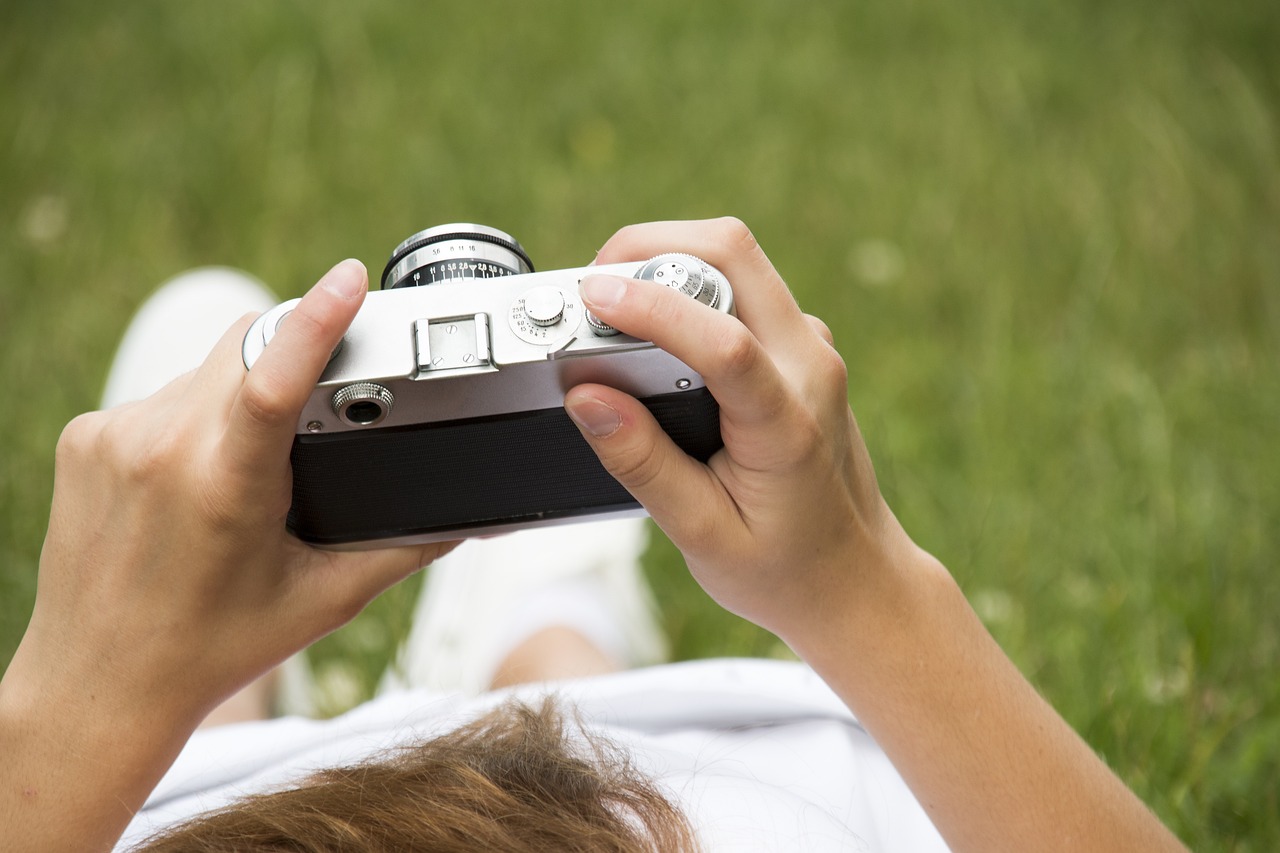This article provides a comprehensive guide on streaming directly from an action camera to popular platforms like YouTube and Facebook. It covers essential steps, equipment, and tips for successful live streaming.
To successfully stream from your action camera, it is crucial to have the right equipment. The primary components include:
- Action Camera: Ensure it supports live streaming.
- Stable Internet Connection: A minimum of 5 Mbps upload speed is recommended.
- Capture Card: Useful for HDMI connections.
- Streaming Software: Essential for managing your broadcast.
When selecting an action camera, consider key features that impact your live streaming experience:
- Video Quality: Look for cameras that offer at least 1080p resolution.
- Battery Life: Opt for models with extended battery life for longer streams.
- Compatibility: Ensure the camera works with your chosen streaming platform.
Configuring your action camera is vital for optimal performance. Follow these steps:
- Access the camera settings menu.
- Enable live streaming mode.
- Adjust video resolution and frame rate as needed.
To stream effectively, you need to connect your action camera to a computer. Here are the common methods:
- USB Connection: Simple and effective for many cameras.
- HDMI Connection: Preferred for higher quality streams.
The software you choose can significantly affect your stream’s quality. Some popular options include:
- OBS Studio: A free and versatile option with robust features.
- Streamlabs: Offers user-friendly interfaces and additional tools.
- XSplit: Known for its professional-grade features, though it requires a subscription.
To go live on YouTube, follow these steps:
- Log into your YouTube account.
- Navigate to the ‘Create’ button and select ‘Go Live.’
- Configure your stream settings, including title and description.
- Copy your stream key into your streaming software.
- Hit ‘Start Streaming’ and then ‘Go Live’ on YouTube.
Streaming on Facebook involves a few specific steps:
- Log into your Facebook account.
- Click on ‘Live Video’ from your feed.
- Set your stream preferences and permissions.
- Connect your streaming software to Facebook using the stream key.
- Start your broadcast.
To enhance your streaming experience, consider the following tips:
- Engage with Your Audience: Respond to comments and questions during the stream.
- Test Your Setup: Conduct a trial run before going live to troubleshoot any issues.
- Maintain Good Lighting: Ensure your streaming environment is well-lit for better video quality.
By following this guide, you can confidently stream from your action camera to YouTube and Facebook, ensuring a high-quality experience for both you and your audience.
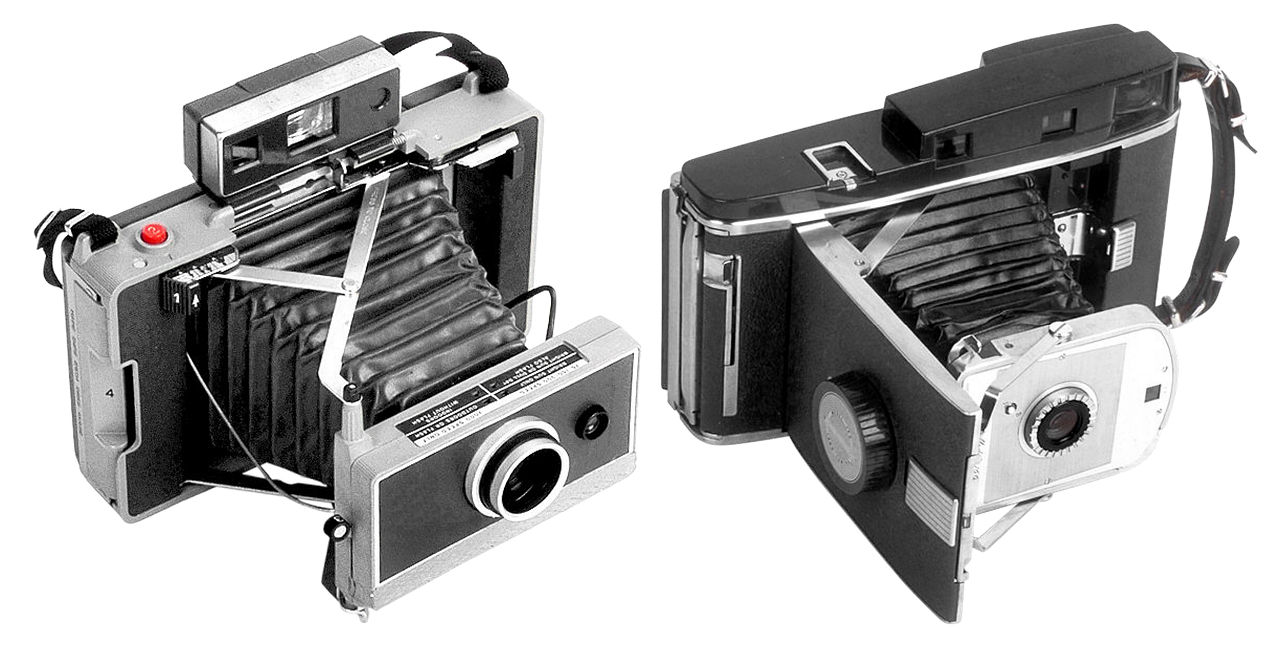
What Equipment Do You Need for Streaming?
Streaming directly from your action camera can be an exhilarating way to share your adventures live with an audience. However, to ensure a smooth and high-quality experience, it is essential to have the right equipment at your disposal. Below, we will delve into the key components necessary for successful streaming.
To stream effectively from your action camera, you will need a combination of hardware and software. Here’s a detailed breakdown:
- Action Camera: The first and foremost piece of equipment is, of course, your action camera. Ensure it has streaming capabilities, good video resolution (at least 1080p), and a reliable battery life.
- Stable Internet Connection: A strong and stable internet connection is critical for live streaming. Aim for a minimum upload speed of 5 Mbps for smooth streaming. If possible, use a wired Ethernet connection for enhanced stability.
- Capture Card: If your camera outputs via HDMI, a capture card will be necessary to convert the video signal into a format your computer can use. Popular options include the Elgato HD60 S and AVerMedia Live Gamer.
- Streaming Software: Software like OBS Studio or Streamlabs is essential for managing your stream. These programs allow you to control your broadcast settings, add overlays, and manage audio input.
- Tripod or Stabilizer: To keep your camera steady during streaming, a tripod or stabilizer is recommended. This equipment helps to avoid shaky footage, which can detract from viewer experience.
- Microphone: Good audio quality is just as important as video quality. Consider using an external microphone to capture clear sound, as built-in camera mics may not be sufficient.
- Lighting Equipment: Proper lighting can significantly enhance the quality of your stream. If you’re streaming indoors or in low-light conditions, consider investing in softbox lights or ring lights.
By gathering these essential components, you will be well on your way to creating engaging and professional live streams. Each piece of equipment plays a vital role in ensuring that your audience enjoys a seamless viewing experience.
In summary, the right action camera, a stable internet connection, a capture card, streaming software, and additional accessories are all crucial for successful streaming. With the right setup, you can share your adventures in real-time, connecting with viewers in a dynamic and interactive way.
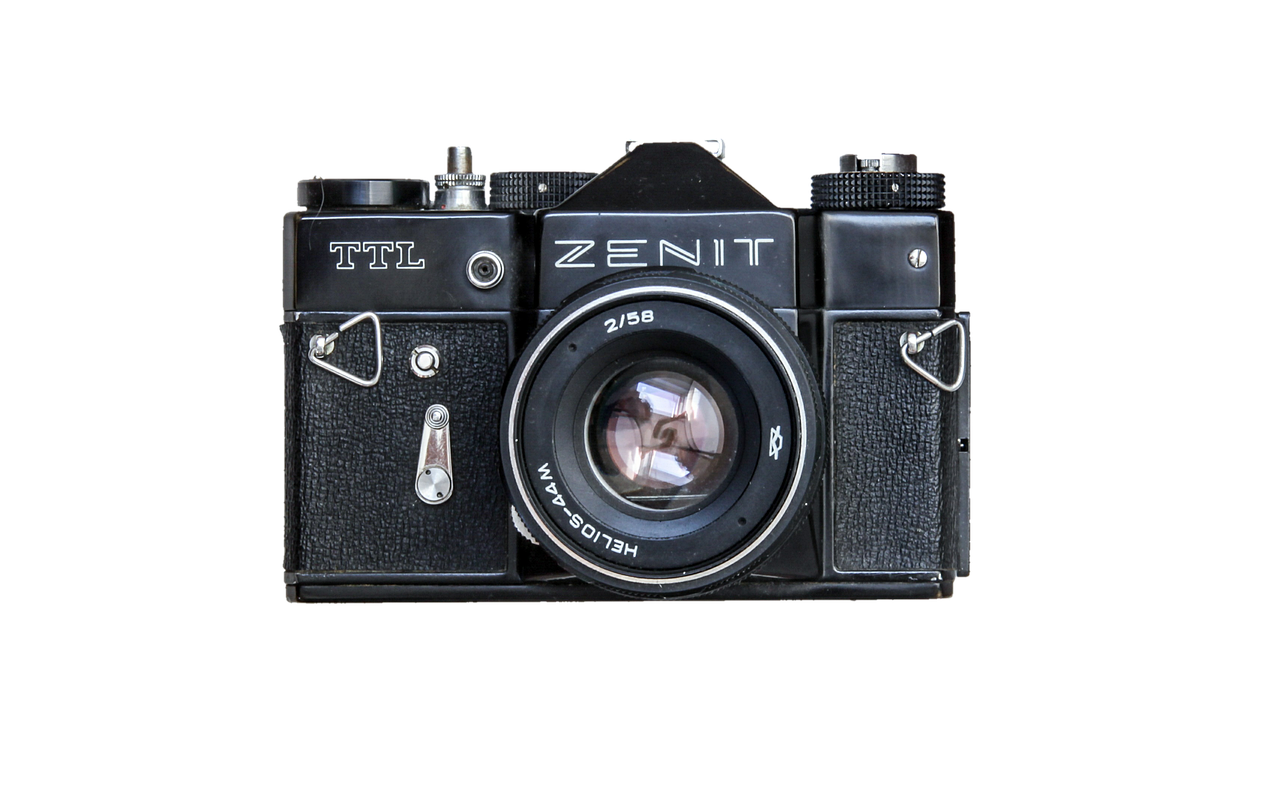
How to Choose the Right Action Camera?
Choosing the right action camera can significantly enhance your live streaming capabilities. With a myriad of options available on the market, it’s essential to understand the critical factors that influence your decision. This guide will delve into the key features to consider, ensuring you select a camera that meets your needs.
Video quality is arguably the most crucial aspect when selecting an action camera. Look for cameras that offer at least 1080p resolution, but if you want to future-proof your setup, consider models that support 4K resolution. Higher resolutions provide crisper images and more detail, which is especially important for live streaming where viewers expect high-quality content.
Battery life is another critical factor to consider. Streaming can drain your camera’s battery quickly, so opt for models that offer extended battery life or those that allow for external battery packs. A camera with a battery life of at least two hours is recommended for uninterrupted streaming sessions.
Compatibility with popular streaming platforms like YouTube and Facebook is vital. Ensure the action camera you choose can easily connect to these services, either directly or through a computer. Many modern action cameras come with built-in Wi-Fi or Bluetooth capabilities, allowing for seamless integration with streaming applications.
Action cameras are designed for adventure, so durability is key. Look for cameras with waterproof and shockproof features, especially if you plan to stream in challenging environments. A rugged build ensures that your camera can withstand various conditions, providing peace of mind during your live streams.
- Stabilization: Look for cameras with built-in stabilization features to reduce shaky footage, enhancing the viewing experience.
- Field of View: A wider field of view can capture more of your surroundings, making your streams more engaging.
- Audio Quality: Good audio is as important as video quality. Consider cameras that offer external microphone inputs for better sound capture.
Once you have a shortlist of potential action cameras, compare their specifications side by side. Look for user reviews and expert opinions to understand how each model performs in real-world scenarios. Websites dedicated to tech reviews can provide valuable insights into the pros and cons of each camera.
Lastly, set a budget before you start shopping. Action cameras can vary significantly in price, so knowing how much you are willing to spend will help narrow down your options. Remember, while it might be tempting to go for the cheapest option, investing in a quality camera can pay off in the long run with better performance and durability.
By considering these factors—video quality, battery life, compatibility, durability, additional features, and budget—you can make an informed decision when selecting the right action camera for your streaming needs. A well-chosen camera will not only enhance your live streaming experience but also provide you with a reliable tool for capturing your adventures.
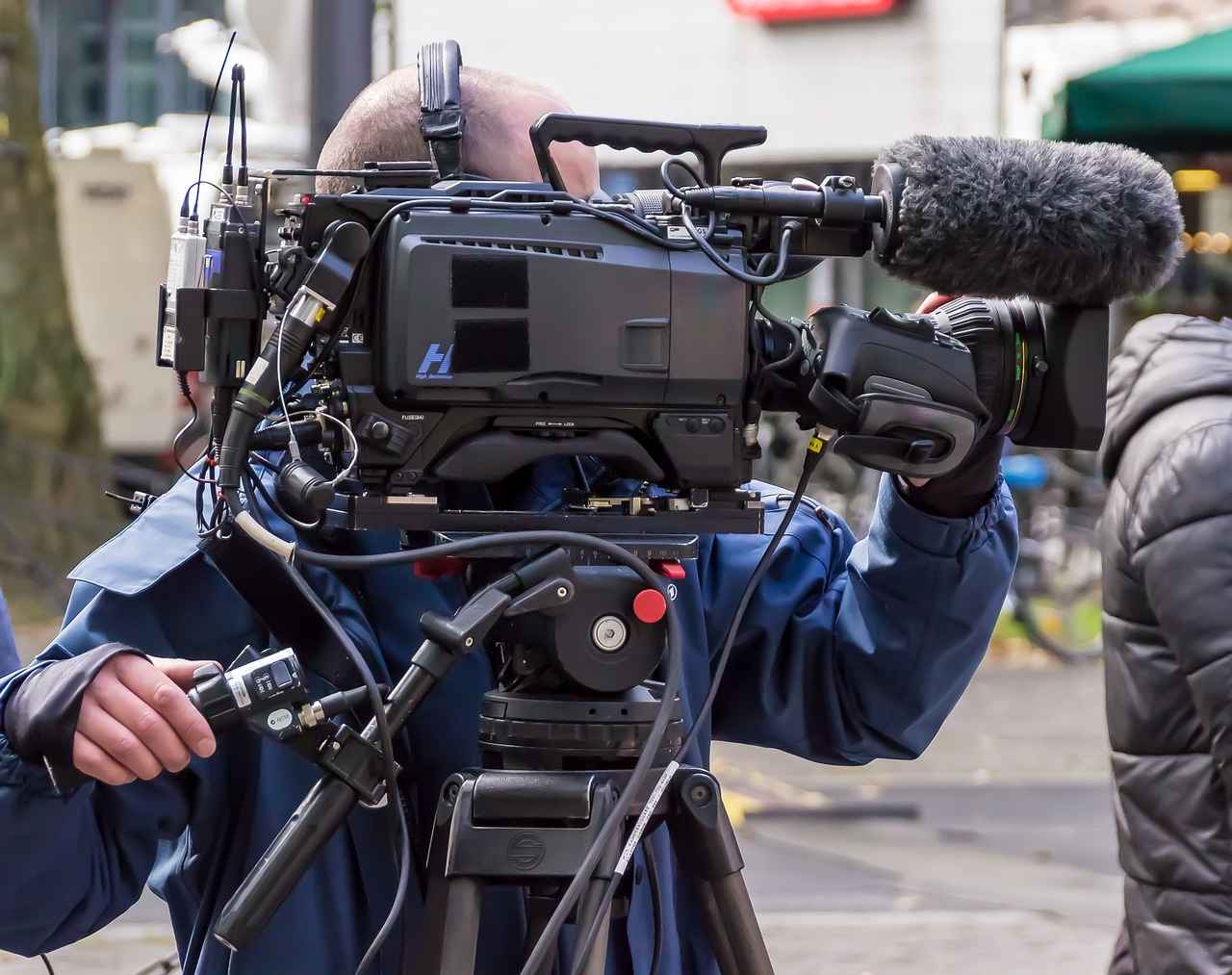
Setting Up Your Action Camera for Streaming
Setting up your action camera for streaming is essential for achieving a smooth and professional broadcast. With the right configuration, you can ensure that your audience enjoys high-quality video and audio. This section will guide you through the necessary settings adjustments and tips to optimize your action camera for live streaming.
- Check Camera Compatibility: Before diving into settings, confirm that your action camera is compatible with live streaming. Popular models from brands like GoPro and DJI often come with built-in streaming capabilities.
- Update Firmware: Keeping your camera’s firmware up-to-date is crucial. Manufacturers frequently release updates that enhance performance and introduce new features. Check the manufacturer’s website for the latest version and follow their instructions for updating.
- Adjust Video Resolution: For optimal streaming quality, select a video resolution that balances quality and bandwidth. A resolution of 1080p at 30fps is generally a good starting point for most platforms.
Once you’ve confirmed compatibility and updated your firmware, it’s time to dive into the settings:
1. Navigate to the camera's settings menu.2. Look for the streaming option, often labeled as "Live Streaming" or "Broadcast."3. Choose your preferred platform (YouTube, Facebook, etc.) and log in to your account.4. Set the resolution and frame rate according to your internet speed and audience preferences.5. Enable audio input if your camera supports external microphones for better sound quality.
Ensure a Stable Internet Connection: A reliable internet connection is vital for live streaming. Test your upload speed; a minimum of 5 Mbps is recommended for a stable 1080p stream. If possible, connect your camera to the internet via Ethernet for a more stable connection.
Utilize Streaming Software: Depending on your action camera, you may need additional streaming software to facilitate the broadcast. Programs like OBS Studio or Streamlabs can help manage your stream and provide advanced features like overlays and scene transitions.
- Configure Audio Settings: Ensure that your audio settings are appropriately configured within the software. This may involve selecting the correct audio source and adjusting levels to prevent distortion.
- Test Your Setup: Before going live, conduct a test stream to check video and audio quality. This will help you identify any potential issues and make adjustments as needed.
In conclusion, configuring your action camera for live streaming involves several critical steps, from checking compatibility and updating firmware to adjusting settings and ensuring a stable internet connection. By following these guidelines, you can enhance your streaming experience and provide your audience with high-quality broadcasts.

Connecting Your Action Camera to a Computer
When it comes to live streaming, one of the essential steps is connecting your action camera to a computer. This connection allows you to broadcast your adventures in real-time to platforms like YouTube and Facebook. In this section, we will explore the various methods to establish this connection, focusing on both USB and HDMI options, ensuring you have the necessary knowledge to facilitate a seamless streaming experience.
Connecting your action camera to a computer can be accomplished through various methods. The two most common are:
- USB Connection
- HDMI Connection
The USB connection is one of the simplest and most widely used methods for streaming. To set up:
- Connect your action camera to your computer using a compatible USB cable.
- Ensure that your camera is set to the correct mode for streaming. This often involves navigating to the settings menu and selecting the streaming option.
- Install any necessary software on your computer. Popular software options include OBS Studio and other streaming applications that support USB input.
Once connected, your computer should recognize the camera as a video source, allowing you to stream directly to your chosen platform. This method is particularly user-friendly, making it ideal for beginners.
If you’re looking for higher-quality video, an HDMI connection is the way to go. This method typically provides better resolution and frame rates compared to USB. Here’s how to set it up:
- Obtain an HDMI capture card, which will convert the HDMI signal from your camera into a format your computer can recognize.
- Connect your action camera to the capture card using an HDMI cable.
- Plug the capture card into your computer via USB.
After setting up the hardware, you will need to configure your streaming software to recognize the capture card as a video source. This method is particularly favored by professional streamers due to its superior video quality.
When deciding between USB and HDMI, consider the following factors:
- Video Quality: HDMI generally offers better quality than USB.
- Ease of Use: USB is typically easier to set up, especially for beginners.
- Equipment Availability: Ensure you have the necessary cables and adapters for your chosen method.
Ultimately, the choice between USB and HDMI will depend on your specific requirements and the capabilities of your action camera. By understanding these connection methods, you can make an informed decision that enhances your live streaming experience.
Using USB for Direct Streaming
Streaming directly from your action camera to platforms like YouTube and Facebook has become increasingly popular. One of the most common methods for achieving this is by using a USB connection. In this section, we will delve into the process of connecting your action camera via USB, the necessary software, and tips for a seamless streaming experience.
USB connections are favored for their simplicity and affordability. This method allows you to easily connect your action camera to your computer without the need for additional hardware, making it an accessible option for many users.
To begin streaming via USB, follow these steps:
- Step 1: Ensure your action camera is powered on and ready for use.
- Step 2: Connect one end of the USB cable to your camera and the other end to a USB port on your computer.
- Step 3: Depending on your camera model, you may need to select the USB mode (like Webcam Mode) from the camera’s settings menu.
Once your camera is connected, you will need streaming software to facilitate the broadcast. Popular options include:
- OBS Studio: A free and open-source software that supports a wide range of video formats and provides customizable settings.
- Streamlabs: An intuitive platform that integrates with various streaming services and offers user-friendly features.
- XSplit: A paid option that provides advanced broadcasting tools and is known for its ease of use.
After installing your chosen software, configure it to recognize your action camera. Here’s how:
- Open the software and navigate to the settings or sources tab.
- Add a new source and select your action camera from the list.
- Adjust the resolution and frame rate settings according to your preference and internet bandwidth.
Before going live, it’s essential to test your setup. Perform the following:
- Check the video feed: Ensure the camera’s feed appears correctly in the software.
- Monitor audio levels: If your camera has a built-in microphone, test the audio quality.
- Conduct a trial stream: Go live privately to check for any connectivity or performance issues.
To enhance your streaming experience, consider these tips:
- Stable Internet Connection: Ensure you have a reliable and fast internet connection to avoid interruptions.
- Lighting: Good lighting can significantly improve video quality. Use natural light or softbox lights to enhance visibility.
- Engage with Your Audience: Interact with viewers through comments and respond to their questions to keep them engaged.
By following these guidelines, you can effectively stream from your action camera using a USB connection, providing your audience with high-quality content on platforms like YouTube and Facebook.
Using HDMI for Higher Quality Streams
When it comes to live streaming from your action camera, using HDMI connections can significantly enhance the quality of your stream. This method not only allows for better video and audio quality but also provides a more reliable connection compared to USB. In this section, we will explore how to set up an HDMI connection, the equipment you will need, and the benefits of this method.
To successfully set up an HDMI connection for streaming, you will need the following equipment:
- Action Camera: Ensure that your camera has an HDMI output port.
- HDMI Cable: A high-speed HDMI cable is essential for transmitting high-quality video and audio signals.
- Capture Card: This device converts the HDMI signal into a format that your computer can recognize. Popular options include Elgato HD60 S and AVerMedia Live Gamer.
- Streaming Software: Software like OBS Studio or Streamlabs will be necessary to manage your live stream.
- Computer: A computer with sufficient processing power to handle the streaming software.
Setting up your HDMI connection is straightforward. Follow these steps for a successful setup:
- Connect the HDMI Cable: Plug one end of the HDMI cable into the HDMI output of your action camera and the other end into the input of your capture card.
- Connect the Capture Card to Your Computer: Use a USB cable to connect your capture card to your computer. Make sure the card is powered if required.
- Install Necessary Drivers: If your capture card requires specific drivers, install them according to the manufacturer’s instructions.
- Configure Streaming Software: Open your streaming software and select the capture card as your video source. Adjust settings such as resolution and frame rate to ensure optimal performance.
- Test Your Setup: Before going live, run a test stream to check audio levels and video quality. Make adjustments as needed.
There are several advantages to using HDMI connections for your live streams:
- Higher Quality Video: HDMI supports higher resolutions and frame rates, allowing for crisp and clear visuals.
- Better Audio Quality: HDMI transmits audio and video together, ensuring synchronized sound without the need for additional audio cables.
- Stable Connection: HDMI connections are generally more stable than USB connections, reducing the chances of lag or disconnection during your stream.
- Compatibility: Many professional streaming setups use HDMI, making it a standard in the industry.
By following these guidelines and understanding the equipment necessary for HDMI streaming, you can elevate your live streaming experience to new heights. Whether you’re sharing your adventures on YouTube or engaging with followers on Facebook, the quality of your stream can make a significant difference in audience engagement and satisfaction.

Choosing the Right Streaming Software
When it comes to live streaming, the software you choose can greatly influence the quality of your broadcast. With numerous options available, selecting the right streaming software is crucial for ensuring a seamless and professional streaming experience. This section will delve into popular streaming software options, their features, and how they can enhance your live broadcasts.
The choice of streaming software can impact several aspects of your broadcast, including video quality, latency, and user interface. A good streaming software should provide tools for managing your broadcast effectively, allowing you to focus on your content without technical interruptions.
- OBS Studio: This free and open-source software is a favorite among streamers. It offers a robust set of features, including customizable transitions, multiple source support, and the ability to stream to various platforms simultaneously. Its flexibility makes it suitable for both beginners and advanced users.
- Streamlabs OBS: Built on the foundation of OBS Studio, Streamlabs OBS integrates additional features tailored for streamers, such as built-in alerts and chat management. This software is designed to simplify the streaming process, making it an excellent choice for those looking for an all-in-one solution.
- XSplit: XSplit offers both free and premium versions, providing a user-friendly interface and advanced features like scene transitions and video editing capabilities. While it may require a subscription for full access, its ease of use attracts many content creators.
- vMix: A powerful option for professional-grade streaming, vMix supports a wide range of inputs and outputs, including HD and 4K video. It’s ideal for users who need advanced production capabilities, such as live mixing and real-time graphics.
When choosing streaming software, consider the following features:
- Compatibility: Ensure the software is compatible with your action camera and streaming platform.
- User Interface: A clean and intuitive interface can significantly enhance your streaming experience, especially for beginners.
- Customization: Look for software that allows you to customize your stream layout and add graphics or overlays.
- Support and Community: A strong support network and community can be invaluable when troubleshooting issues or seeking advice.
To select the best streaming software for your needs, assess your streaming goals. Are you looking for a simple solution for casual streaming, or do you need advanced features for professional broadcasts? Consider your level of experience as well; some software may have a steeper learning curve than others.
Once you have chosen your streaming software, it is essential to test it thoroughly before going live. Conduct test streams to check for any lag, audio issues, or visual glitches. This preparation will help you optimize your settings for the best possible broadcast quality.
In conclusion, the streaming software you select plays a pivotal role in the success of your live broadcasts. By understanding the features of various options and considering your specific needs, you can make an informed decision that enhances your streaming experience.
OBS Studio: An Overview
OBS Studio is a powerful and versatile software that has gained immense popularity among streamers and content creators. As a free and open-source solution, it offers a range of functionalities that cater to both beginners and experienced users. This article delves into the features of OBS Studio and explains why it is an excellent choice for streaming from an action camera.
One of the most compelling reasons to choose OBS Studio is its customizability. Users can create multiple scenes, each with its own set of sources, such as video feeds, images, and text overlays. This allows for a tailored streaming experience that can adapt to various content types, from gaming to live events.
- Multi-Platform Support: OBS Studio is available for Windows, macOS, and Linux, making it accessible to a wide range of users.
- High-Quality Streaming: The software supports streaming in up to 4K resolution, ensuring that your audience enjoys a clear and professional-looking broadcast.
- Audio Mixing: OBS Studio includes an advanced audio mixer, allowing users to adjust audio levels and apply filters to enhance sound quality.
- Scene Transitions: With a variety of transition effects, streamers can switch between scenes smoothly, adding a professional touch to their broadcasts.
When streaming from an action camera, OBS Studio provides the necessary tools to optimize the experience. The software’s ability to handle different video sources makes it ideal for integrating action cameras, which often require specific settings for optimal performance.
Getting started with OBS Studio is straightforward. First, download and install the software from the official website. Connect your action camera to your computer using either USB or HDMI, depending on your camera’s capabilities. Once connected, open OBS Studio and follow these steps:
- In the main interface, click on the “+” button under the “Sources” box.
- Select “Video Capture Device” and name your source.
- Choose your action camera from the device dropdown menu.
- Adjust the settings as necessary to match your streaming preferences.
To ensure a smooth streaming experience, it is crucial to optimize your settings in OBS Studio. Navigate to the “Settings” menu and adjust the following:
- Output Resolution: Set this according to your internet speed and camera capabilities.
- Bitrate: A higher bitrate improves quality but requires a stable internet connection.
- Frame Rate: Aim for 30 or 60 FPS for a fluid viewing experience.
In summary, OBS Studio is a top-tier choice for anyone looking to stream from an action camera. Its extensive features, flexibility, and user-friendly interface make it suitable for both novice and experienced streamers. By following the setup guidelines and optimizing your settings, you can deliver high-quality live streams that engage and captivate your audience.
Other Streaming Software Options
When it comes to live streaming from an action camera, while OBS Studio is a popular choice, there are several alternative streaming software options that cater to different user needs and preferences. This section delves into two of the most notable alternatives: Streamlabs and XSplit, highlighting their unique features and benefits.
Streamlabs is a user-friendly streaming platform that integrates seamlessly with various streaming services. It is particularly popular among gamers and content creators due to its intuitive interface and powerful features. One of the standout aspects of Streamlabs is its customizable overlays, which allow users to personalize their streams easily. Additionally, it offers built-in alerts, chat management, and donation tools, making it ideal for those looking to engage with their audience effectively.
- Easy Setup: Streamlabs simplifies the streaming setup process, allowing users to go live quickly without extensive technical knowledge.
- Integrated Chat: The software includes a chat box that allows streamers to interact with viewers in real-time.
- Widgets and Alerts: Streamlabs provides a variety of widgets to enhance viewer engagement, including donation alerts and subscriber notifications.
- Multi-Platform Support: Users can stream to multiple platforms simultaneously, including YouTube and Facebook, maximizing their reach.
XSplit is another excellent option for live streaming, known for its versatility and advanced features. It is particularly favored by professional streamers and broadcasters. XSplit offers both a Gamecaster version for gamers and a Broadcaster version for more comprehensive streaming needs, making it adaptable to various use cases.
- High-Quality Streaming: XSplit supports high-resolution streaming, ensuring that your audience enjoys a crisp and clear viewing experience.
- Scene Composition: Users can create complex scenes with multiple sources, including video, images, and audio, allowing for a more dynamic presentation.
- Powerful Editing Tools: XSplit includes built-in editing tools, enabling streamers to make real-time adjustments during their broadcast.
- Integration with Other Tools: XSplit works well with various plugins and external tools, enhancing its functionality and user experience.
Choosing the right streaming software largely depends on your specific needs and level of expertise. If you are a beginner looking for a simple interface with robust features, Streamlabs may be the better choice. On the other hand, if you are a professional streamer seeking advanced capabilities and high-quality output, XSplit could be more suitable.
Ultimately, both options provide unique advantages, and experimenting with each can help you determine which software aligns best with your streaming goals. Consider factors such as ease of use, features, and cost when making your decision.
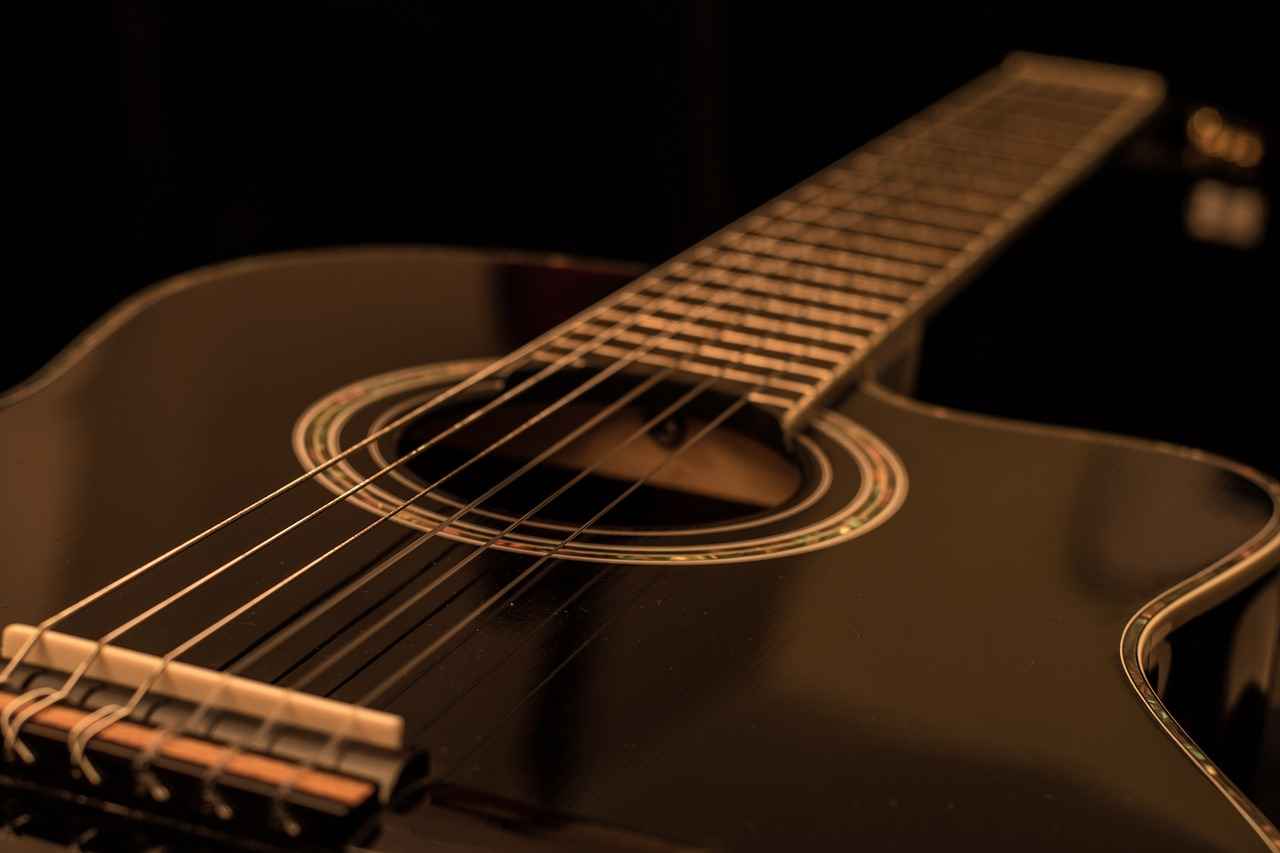
Setting Up Your Live Stream on YouTube
When it comes to live streaming on YouTube, the initial setup of your channel is crucial. Before going live, you must configure your YouTube channel settings. This section provides a step-by-step guide to setting up your stream on YouTube, ensuring a smooth broadcasting experience.
- Sign in to Your YouTube Account: First, make sure you are logged into the YouTube account you wish to stream from. If you don’t have a channel yet, you will need to create one.
- Enable Live Streaming: Navigate to the YouTube Studio and click on the “Create” button. From there, select “Go Live.” If this is your first time streaming, you may need to enable live streaming in your account settings. This process can take up to 24 hours.
- Set Up Your Stream: Choose between “Stream” and “Webcam” options. For action cameras, select the “Stream” option. Fill in the necessary details such as title, description, and privacy settings (public, unlisted, or private).
- Configure Stream Settings: Adjust your stream settings to enhance the quality. You can set the resolution, frame rate, and bitrate according to your internet speed and camera capabilities. A higher resolution and bitrate provide better quality but require a stronger internet connection.
- Stream Key and URL: You will receive a unique stream key and URL. This information is essential as it links your camera to your YouTube channel. Keep your stream key private to prevent unauthorized access.
- Choose a Thumbnail: Select an eye-catching thumbnail for your live stream. This will help attract viewers and give them a preview of what your stream is about.
- Test Your Setup: Before going live, conduct a test stream to ensure everything is working correctly. Check your audio and video quality, and make sure your internet connection is stable.
- Go Live: Once you are satisfied with your setup, click the “Go Live” button. Engage with your audience through the chat feature and ensure to monitor your stream’s performance.
By following these steps, you can successfully set up your live stream on YouTube. Remember to interact with your audience during the broadcast, as engagement is key to a successful streaming experience. Additionally, consider promoting your stream ahead of time on social media platforms to attract more viewers.
For ongoing success, always review your stream analytics post-broadcast. This will help you understand viewer engagement and areas for improvement in future streams.
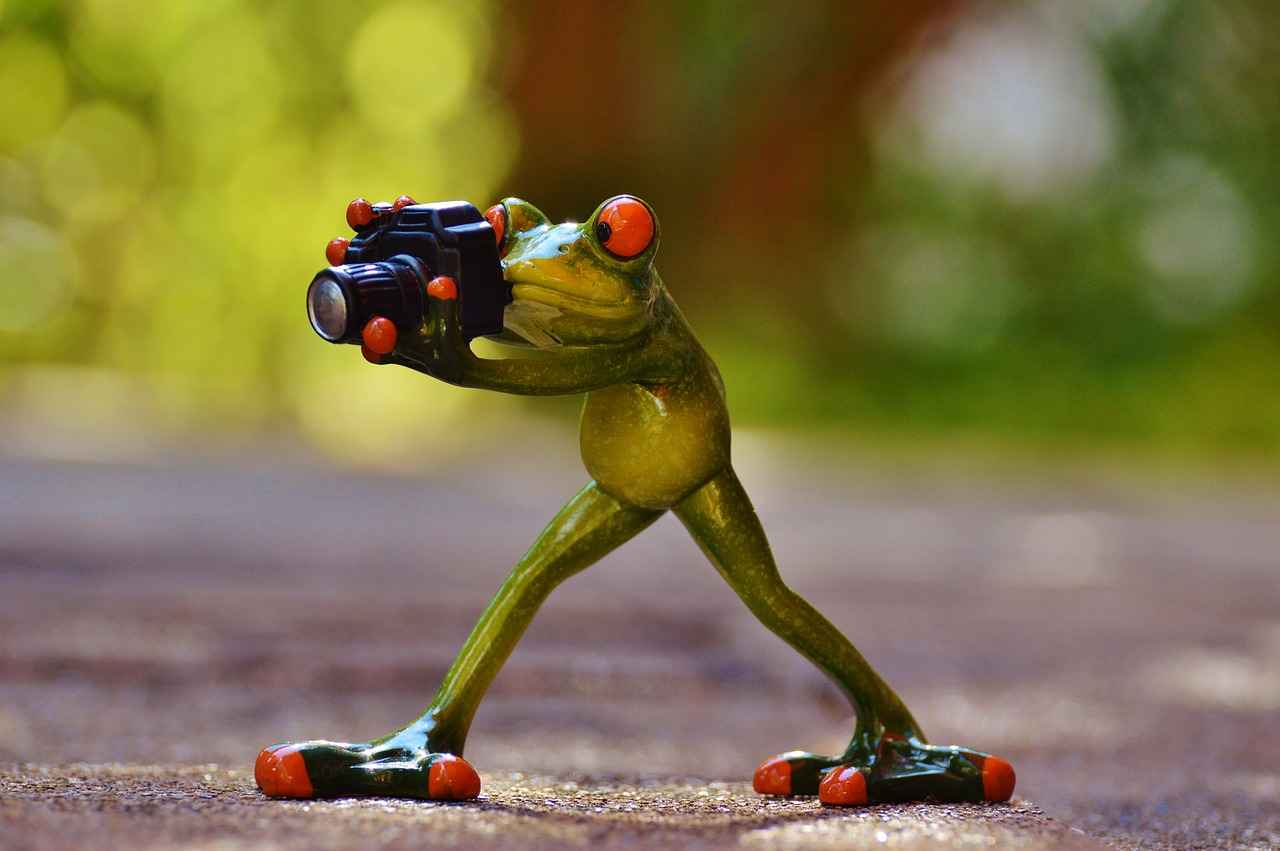
How to Go Live on Facebook?
Streaming on Facebook is an exciting way to engage with your audience in real-time. However, it requires a series of specific steps to ensure a successful live broadcast. This guide will walk you through the essential processes, including necessary permissions and settings adjustments, so you can confidently go live on Facebook.
What Permissions Do You Need to Go Live on Facebook?
- Account Verification: Ensure your Facebook account is verified. This may involve confirming your identity through email or phone number.
- Live Streaming Permissions: Check that your account has the necessary permissions to stream live content. If you’re using a business page, ensure it is set up correctly.
How to Adjust Your Facebook Settings for Live Streaming?
- Privacy Settings: Before going live, review your privacy settings to determine who can view your stream. You can choose between public, friends, or custom settings.
- Notifications: To enhance audience engagement, consider enabling notifications for followers so they are alerted when you go live.
How to Set Up Your Live Stream on Facebook?
- Access the Live Streaming Feature: Navigate to your Facebook homepage and click on the “Live Video” option found in the post creation box.
- Choose Your Streaming Method: Decide whether to stream using your webcam, mobile device, or an external camera connected via streaming software.
- Configure Your Stream: Add a compelling title and description for your live stream. This is crucial for attracting viewers and providing context.
- Check Your Connection: Ensure you have a stable internet connection, as this is vital for maintaining stream quality. A wired connection is often more reliable than Wi-Fi.
What Tools Can Enhance Your Facebook Live Experience?
- Streaming Software: Consider using software like OBS Studio or Streamlabs for more control over your broadcast. These tools allow you to add overlays, graphics, and multiple camera angles.
- External Microphone: Invest in a good-quality microphone to improve audio clarity. Poor sound quality can deter viewers from staying engaged.
How to Engage Your Audience During the Live Stream?
- Interact with Viewers: Acknowledge comments and respond to questions in real-time, making your audience feel valued and included.
- Use Visuals: Incorporate visuals, such as slides or videos, to keep the content dynamic and interesting.
- Promote Ahead of Time: Announce your live stream in advance through posts and stories to generate excitement and anticipation among your followers.
By following these steps and considerations, you can successfully set up and execute a live stream on Facebook. With the right permissions, settings adjustments, and engagement strategies, your live broadcasts can become a powerful tool for connecting with your audience and building a community around your content.
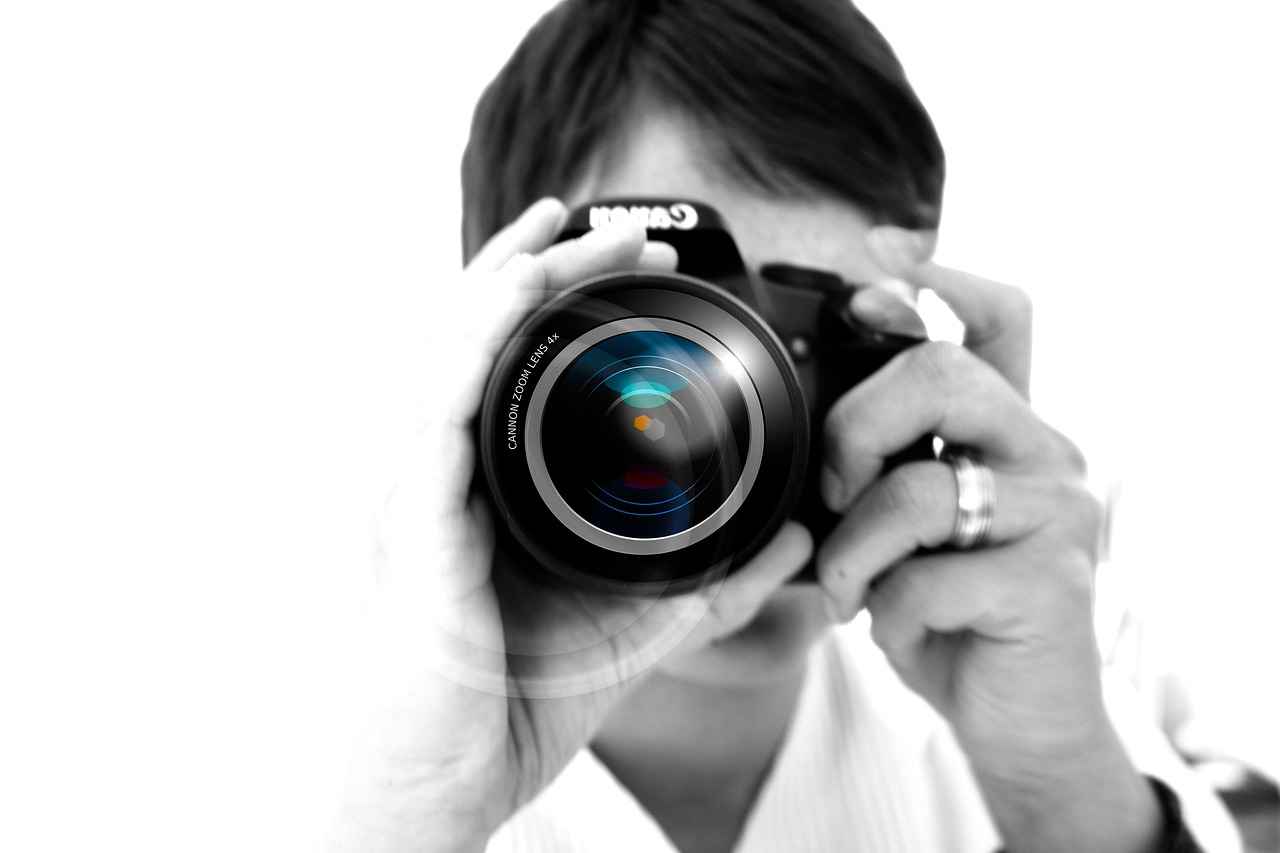
Tips for a Successful Live Stream
When it comes to live streaming, whether for gaming, tutorials, or sharing experiences, ensuring a successful broadcast is crucial. Engaging your audience while maintaining high-quality content can significantly enhance your streaming experience. Here are some essential tips to help you achieve a successful live stream.
Engaging your audience is not just about entertaining them; it’s about building a community. When viewers feel connected, they are more likely to return for future streams. Consider the following strategies:
- Interact with Viewers: Respond to comments and questions in real-time. This interaction creates a sense of involvement and encourages more viewers to engage.
- Use Polls and Q&A Sessions: Incorporate polls or Q&A sessions during your stream to make your audience feel valued and part of the content creation process.
- Incorporate Viewer Feedback: Ask for feedback on what content they would like to see next. This not only shows you care but also helps tailor your streams to their interests.
Quality is key to retaining viewers. Here are some tips to ensure your stream is of the highest quality:
- Stable Internet Connection: A reliable and fast internet connection is essential. Aim for an upload speed of at least 5 Mbps for smooth streaming.
- Optimize Your Camera Settings: Ensure your action camera is set to the best resolution and frame rate for streaming. Higher quality settings will enhance viewer experience.
- Test Your Equipment: Before going live, conduct test streams to check audio and video quality. This allows you to troubleshoot any potential issues.
Utilizing the right tools can elevate your streaming quality. Consider these options:
- Streaming Software: Use software like OBS Studio or Streamlabs for better control over your stream. These tools offer features like overlays, alerts, and scene transitions.
- Audio Equipment: Invest in a good microphone to improve audio quality. Clear sound is often more important than video quality for viewer engagement.
- Lighting Setup: Proper lighting can make a significant difference. Ensure your streaming area is well-lit to enhance video clarity.
Promotion is essential to attract viewers. Here are some effective strategies:
- Utilize Social Media: Announce your upcoming streams on platforms like Twitter, Instagram, and Facebook to reach a wider audience.
- Create a Streaming Schedule: Consistency helps build an audience. Let your viewers know when to expect your broadcasts.
- Collaborate with Other Streamers: Partnering with other content creators can introduce your channel to their audience, expanding your reach.
By implementing these strategies, you can significantly enhance your live streaming experience. Engaging your audience, maintaining high-quality streams, utilizing the right tools, and promoting effectively are all critical components of a successful broadcast. Remember, the more effort you put into your streams, the more rewarding the experience will be for both you and your viewers.
Frequently Asked Questions
- What is the best action camera for live streaming?
Choosing the best action camera for live streaming often depends on your specific needs. Look for features like high video quality, long battery life, and compatibility with streaming platforms. Popular choices include the GoPro Hero series and DJI Osmo Action, both known for their excellent performance.
- Do I need special software to stream from my action camera?
Yes, you typically need streaming software to broadcast your action camera footage. Options like OBS Studio are popular and free, providing robust features for a smooth streaming experience. Other alternatives include Streamlabs and XSplit, each with unique functionalities.
- Can I stream directly from my action camera to social media?
Absolutely! Many action cameras allow for direct streaming to platforms like YouTube and Facebook. Just ensure you have a stable internet connection and follow the specific setup instructions for each platform to go live seamlessly.
- What connection method is best for streaming?
For the highest quality stream, using an HDMI connection is recommended. However, if convenience is key, USB connections can also work well. It really depends on your setup and what equipment you have at hand!
- How can I improve the quality of my live stream?
To enhance your live stream quality, consider using a good microphone for clear audio, ensuring proper lighting, and checking your internet speed. Engaging with your audience through comments can also make your stream more interactive and enjoyable!
